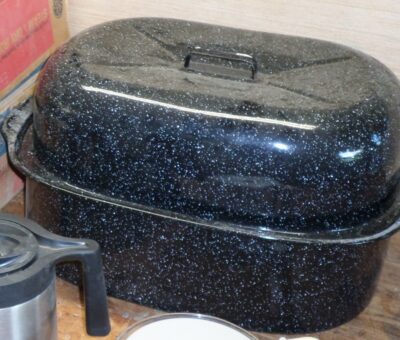Yard Sales and Thrift Stores I
Many of you are, like me, familiar with, and probably partakers in, the “tailgating” tool flea markets that are fairly common around MWTCA meetings, tool auctions, and the like. I might only spend a minute or two per year buying clothes and shoes, but I can sink days into scrounging for tools. I carry the same mindset to almost every yard sale or thrift store I encounter, and often with more strategic buys in mind.
In fact, all of my workspaces are chock full of yard sale and thrift store resources. I’ve had a pretty good stretch of useful acquisitions lately.

Here are some treasures from a recent event, a community yard sale just before winter got here. In a few minutes and for a few dollars, I came home with this booty.

My first treasure was this collection of assorted tacks, of which I bought six boxes for $1. I am always on the lookout for vintage fasteners, and this box is the type of assorted tacks that was common in hardware stores in the 1950s and 1960s. At some point when I get bored enough I will sort the contents of the boxes, ranging from 1/4″ in length to 1″.

Grinding shellac anyone? I don’t like coffee, never have. But coffee grinders, especially one for 50 cents? There’s always space for them as I use them to grind up shellac, resin beads, whatever.

What in the world can I do with cake and jello molds? Well, there is a lacquerwork technique I want to experiment with, using my epoxy fauxrushi. This technique involves draping strips or sheets of impregnated fabric over a mold, then demolding after hardening. The molds will have to be sized with whiting first, but they are a terrific testing opportunity for the idea. If my memory is intact this stack was $1.

Since I use heat for a lot of functions involving wax or glue, old timey electric irons are just the tool for a lot of applications. These were $2 a piece. In the original boxes no less.

Since I melt wax a lot, and even more in the near future as I delve again into lost wax metal casting, I’ve found that using coffee pots are darned near perfect for material handling. I can melt wax on a hot plate with these beauties, and then pour into whatever form or mold I’m using for whatever project I am creating. I got these four for a buck apiece.

Perhaps my biggest prize, both conceptually and physically, was this very large turkey roasting pan. What in the world do you need with a turkey roasting pan? (Mrs. Barn asked me the very same question). Well, when steaming the wax out of a ceramic investment mold, that is “Losing the wax” in lost-wax metal casting, you gotta invert the investment mold and steam out the wax. This roasting pan is just perfect for the largest investment shell I will ever do. I shelled out big bucks for this one, $4. And worth every penny.
Fifteen minutes, fourteen and a half dollars. Not a bad way to spend a little time and money on the way home from the post office.
PS – between the wedding, and Christmas, and family visits going in both directions, and preparing the Maryland house for new occupants, I don’t think I’ve spent a dozen hours in the shop doing any real work since the beginning of November. “If only I can get past this next thing,” I tell myself… But there is always another dozen things waiting in line.
Sigh.



Recent Comments